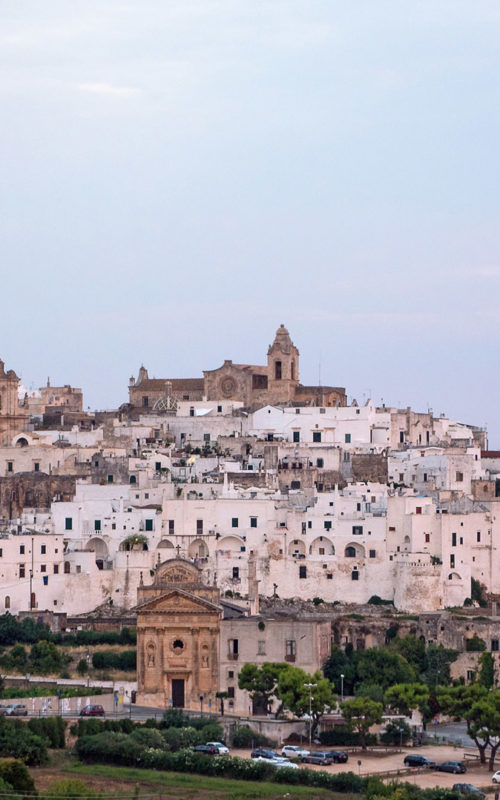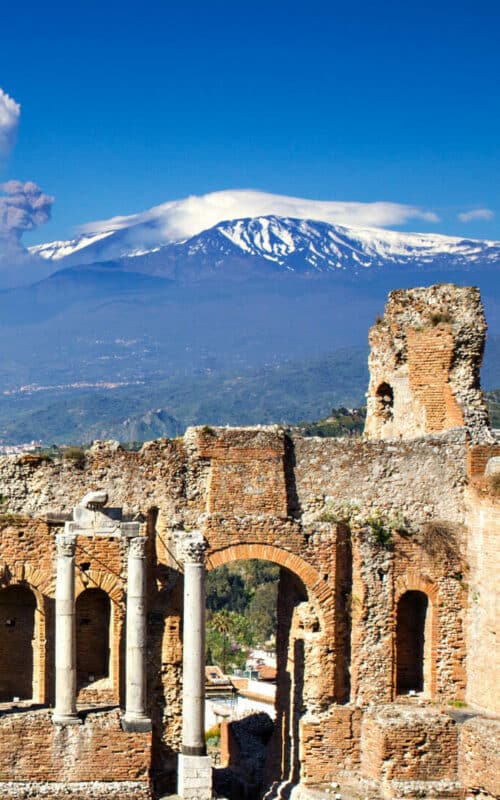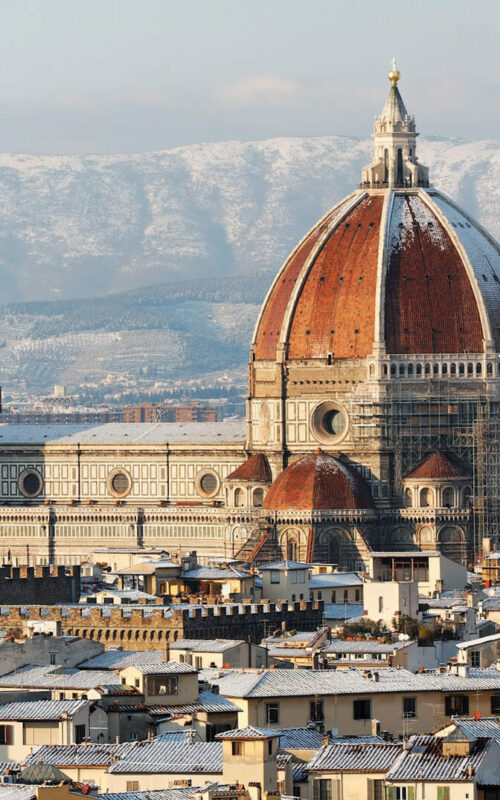The promise of winter sunshine and milder temperatures make Italy an enticing destination in January. Some attractions will be closed as it is the offseason, but the south of Italy and Sicily will be quiet and very pleasant. The wintertime generally brings the lowest rates and fewest visitors along with chilly temperatures, rain and often snow in the north. In the south, winter temperatures average around 10°C. There is an exception to winter being the low season- in and around any of the mountain ski resorts it is the high season as these areas draw many skiers, snowboarders and other snow sports enthusiasts.

The best time to visit Italy
Travelling during Italy’s ‘slow season’ in late spring (April to June) and in autumn (September to November) is often considered the best time to visit.
Italy’s shoulder seasons allow you to explore at a slower pace before or after the summer holiday makers and Italians swarm to beaches and cities. Temperatures are comfortable as wildflowers start to bloom in April, harvest season is in full swing from the end of September and cities are quieter for sightseeing.
Explore the best time to visit
- Jan
- Feb
- Mar
- Apr
- May
- Jun
- Jul
- Aug
- Sep
- Oct
- Nov
- Dec
Visiting Italy in January
low seasonVisiting Italy in February
low seasonFebruary is generally the low season, other than Carnival which falls in the period before Lent. You can enjoy the major cities without the crowds and hotels often offer significant discounts. Be prepared for reduced opening hours and limited access to some attractions. There is often snow in the north, and in the south winter temperatures average around 10°C. In Sicily, the first of the almond blossoms are celebrated to welcome in spring. There is an exception to winter being the low season- in and around any of the mountain ski resorts it is the high season as these areas draw many skiers, snowboarders and other snow sports enthusiasts.
Visiting Italy in March
medium seasonMarch is considered shoulder season in Italy and is arguably one of the best times to visit. Temperatures are typically very comfortable, but can be mixed with spells of sunshine and rain. Depending on whether Easter falls in March or April, celebrations take place across the country. Hotels that shut for winter open again after Easter, meaning visitor numbers begin to rise.
Visiting Italy in April
medium seasonArguably one of the best times to visit, April is considered shoulder season in Italy. Temperatures are typically very comfortable, making April an ideal compromise between the low and high seasons. Everything is now open as usual after the winter months, with ferries and hiking trails starting to pick up again. Celebrate the start of spring with tulip festivals and artichoke festivals, and celebrate romance with Venice’s Festa di San Marco. Depending on whether Easter falls in March or April, celebrations take place across the country.
Visiting Italy in May
high seasonFrom mid-May through to July, Italy will be teeming with visitors and rates will be at their highest. Expect very warm temperatures through the country, with the most extreme heat in the south and inland. Beat the crowds by venturing to smaller villages and lesser-known places, avoiding big cities like Rome, Venice and Florence. Whilst it may be busy, the Festa della Sense in Venice marks their ‘Wedding to the Sea’, celebrating with a huge regatta and traditional rowing races taking place.
Visiting Italy in June
high seasonItaly will be teeming with visitors throughout June as high summer temperatures attract visitors to Italy’s beaches. Enjoy open air performances in cities such as Rome and Verona, or venture to the lesser-known villages and towns to escape the hustle and bustle.
Visiting Italy in July
high seasonSchool breaks in July and August see an increase in visitor numbers as high temperatures draw in the crowds. The cities can be particularly stifling, with the beaches and countryside being cooler. Open air performances take place on the Amalfi Coast and Sicily. Rates will be at their highest and availability will be low; if you are planning to travel in July, make sure to plan your trip well in advance.
Visiting Italy in August
high seasonAugust is generally very hot in Italy, with almost the entire country going on holiday during the second half. School breaks mean August sees an increased number of visitors as well as residents. Head for the mountains for cooler climates and exceptional walking and hiking opportunities. Venice International Film Festival starts at the end of August and continues into September.
Visiting Italy in September
medium seasonSummer temperatures have usually peaked; while the days remain hot in September, the nights are cooler. Italians have returned to work and school, with crowds dispersing from beaches and cities. September is the start of the harvest season, with an array of food and wine festivals to celebrate. Venice International Film Festival continues into September and the Regata Storica takes place on the first Sunday in September.
Visiting Italy in October
medium seasonOctober is considered shoulder season in Italy and is arguably one of the best times to visit. Enjoy the last of the summer heat, visiting cities, countryside and mountains alike. Whilst you will not enjoy the lowest rates or smallest crowds of the year, this is an ideal compromise between the low and high seasons. With harvest season well underway, you will have food festivals galore to choose from.
Visiting Italy in November
Similar to January, the milder Mediterranean winters make much of Italy still an option for exploring in November. Being off season, cities and sights are much quieter, but some of the hotels outside of major cities may be closed until Easter. November is truffle season in Italy, complete with markets across northern Italy.
Visiting Italy in December
The promise of winter sunshine and milder temperatures make Italy an enticing destination in December. As this is the off season, some attractions will be closed, but the south of Italy and Sicily will be quiet and very pleasant. The wintertime generally brings the lowest rates and fewest visitors along with chilly temperatures, rain, and often snow in the north. In the south, winter temperatures average around 10°C. There is an exception to winter being low season- in and around any of the mountain ski resorts it is the high season as these areas draw many skiers, snowboarders and other snow sports enthusiasts.
Italy climate guide
Drag the slider to see monthly temperature and rainfall.
| Maximum Temperature (°C) | Monthly Rainfall (mm) | |
|---|---|---|
|
Florence
|
||
|
Lake Como
|
||
|
Milan
|
||
|
Naples
|
||
|
Palermo
|
||
|
Pompeii
|
||
|
Venice
|
||
|
Verona
|
||
|
Puglia
|
Explore Italy
-
Florence
-
Lake Como
-
Milan
-
Naples
-
Palermo
-
Pompeii
-
Venice
-
Verona
-
Puglia
Start planning your trip
Send us an enquiry
Complete our enquiry form and start your next journey.
Review Contact Form
Why Choose Steppes?
Our knowledge, curiosity and expertise set us apart, driving us to create remarkable holidays and Beautiful Adventures tailored perfectly to you, carefully curated to help protect and conserve our planet.
Are you ready to Discover Extraordinary?
Featured in the press









